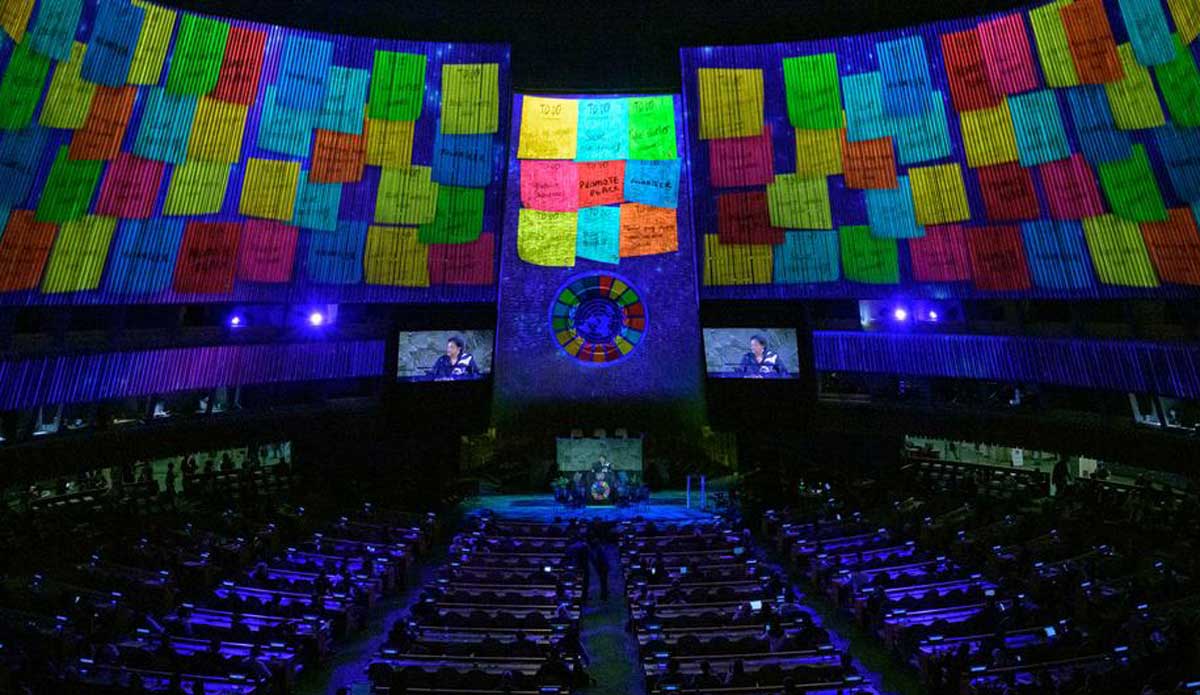The Sustainable Development Goals (SDGs) are the 17 global objectives that have been instituted by the United Nations in its 2015 Agenda for the Future of Humanity. These goals are born from a global commitment to eradicating poverty, protecting the environment, and achieving better living conditions for everyone in the world by 2030. As the agenda is halfway towards its completion, it is becoming more and more clear that the world’s youth almost must be incorporated into the agenda for a successful realization of it. Young people, with their energy and creativity, are positioned to be the most able catalysts in bringing about transformation needed to make these ideals into reality.
The Young Catalyst For Change
It is the cohort of the modern generation, emerging as the largest generation in history with 1.8 billion between the ages of 10 and 24. This offers great demographic leverage for what has never been seen before in investment potential for capturing the ideas of young minds toward sustainable development. Young people as recipients of the Sustainable Development Goals (SDGs), but also, in most cases, active agents of change bring new ideas and different ways of thinking.
The interesting fact about youth participation is that they mobilize across borders. It is through social media and other digital platforms that young people can quickly spread awareness about issues on the SDGs and form international coalitions. This increases the possibility of exchange of best practices and amplification of local activities, scaled up to the global level.
Education and Empowerment
Education acts as the main factor giving youth impetus to action for the SDGs. This gives rise to hopes for instituting new strategies in imparting young learners with the needed skills, knowledge, and competencies throughout their educational pathway. For, Example: The incorporation of Sustainable Development into Educational Philosophy. Education is everything that one requires in shaping critical thinking, problem-solving abilities, sense of global citizenship into learners.
Also, informal education and skill development programs are very relevant in reaching the out-of-school segment in equipping them to contribute towards sustainable development. This will give them an opportunity to join the future by emphasizing technical and job-related training in green arrangements and the circular economy, borrowing on future sustainable industries.
Progress and Entrepreneurial Ventures
This is one such youth-led entrepreneurial venture that is using young innovators to create break-through innovative solutions addressing several SDGs at the same time. Developing an app for reducing food waste, creating affordable renewable energy systems for rural populations, using business models that combine profit and purpose, could lead to inspiring youth startups.
All these can be made possible by establishing appropriate funding systems, mentorship opportunities, as well as platforms for showcasing the work of youth innovators by the governments or even international organizations. Old-school incubators and accelerators now centered on building SDG-related ventures could incubate the new generation “social entrepreneurs” for the next generation of sustainable development scientists.
Youth and political participation in policy formulation
It is certain that only by hearing the voices of young people will these Sustainable Development Goals unfold their transformational potential. Participation by young people in local governance, national politics, and international forums will ensure that future generations’ needs and aspirations are reflected in policies. Through youth delegates to the United Nations, youth parliaments, and youth advisory boards, young people can influence policy. By instituting youth participation in the governance structures, we can create more inclusive and forward-thinking approaches leading to the implementation of the SDGs.
Climate Action and Environmental Stewardship
These young activists have proven to be powerful drivers for climate change strikes. Climate change is now perhaps the most present challenge on Earth, with youth demanding action.
Not only do they advocate for change, but they are also beans involved in conservation practices, tree planting, and even formulating climate-resilient communities. All these efforts commit young people to environmental stewardship, which is vital in achieving SDG 13- Climate Action– and other relevant ones focusing on biodiversity and sustainable resource management.
Using Technology for Influence
In this age of modernity, youth are digital by birth and can easily use this technology to develop solutions around which they can hinge their development. Devices can be used to develop mobile applications for tracking progress on SDGs or to forecast environment trends using artificial intelligence models, among other things
Young people also harness the power of crowdsourcing platforms and citizen science initiatives to provide useful data and insights to the SDG implementation agenda. Bridging the digital divide and ensuring that technology is made available to all will make impact through youth-driven technology interventions much thicker.
Challenges and the Road Ahead
The youth face numerous challenges that hinder them from fully engaging with the SDGs, includes inadequacy of resources and representation in decision-making bodies, as well as the skepticism from the older generations. Hence, government, civil society and the private sector need to bring all these efforts to pave way for youth participation.
This can easily fill the gap between what young people want and the resources needed to realize those dreams through youth initiatives, mentoring, and intergenerational partnerships. Also recognizing and publicizing youth contributions to the SDGs will inspire many other youth to take part and continue their engagement in the long run.
Youth would very much be at the fore in promoting and achieving the Sustainable Development Goals as they transition into new complicated and critical times ahead. One cannot underestimate youth energy, innovation, and commitment to create a more just and sustainable future as a high-value common asset in the journey towards 2030. Unlocking the transformative youth potential and accelerating progress on all SDGs will happen only when we empower youth and create pathways for meaningful participation. Youth harnessed today would in effect build the sustainable tomorrow we expect the planet to have.
